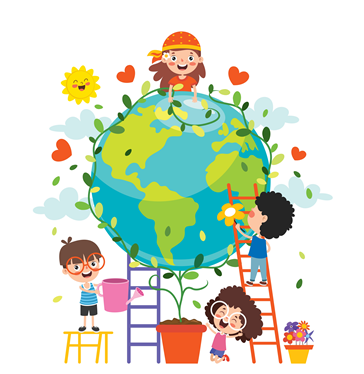The United Nations (UN) introduced World Habitat Day back in 1985, and it has been celebrated on the first Monday of October ever since. The intent of this International Day of Recognition is to reflect on the state of our habitats (our living spaces), and on the basic right of all to adequate housing. It also serves to remind us that we have an inherent responsibility to shape a sustainable future of our cities, towns, and countrysides. This is as true for Canada as anywhere else in the world, and the only way to help ensure protection of our country’s habitats is to teach our children to take the reins to become responsible members of their communities. In response, our Foundation would like to share some ideas for how you can celebrate World Habitat Day with your children and/or students.
How Teachers and Parents Can Recognize World Habitat Day With Their Children
Plan Activities Based on the Current Year’s Theme
There is a new theme appended to each World Habitat Day. Visit the UN resource page with your children to discover what the theme is as it approaches. Once you have identified the theme, you can craft activities around it.
For instance, in 2021, the World Habitat Day theme is as follows:
“The theme for this year’s World Habitat Day is Accelerating urban action for a carbon-free world. The theme recognizes that cities are responsible for some 70 percent of global carbon dioxide emissions with transport, buildings, energy, and waste management accounting for the bulk of urban greenhouse gas emissions. Events and activities during World Habitat Day will explore how national, regional and local governments and organizations, communities, academic institutions, the private sector and all relevant stakeholders can work together to create sustainable, carbon-neutral, inclusive cities and towns.” (UN)
Don’t let your kids feel overwhelmed by the call-to-action placed upon governments, organizations, and institutions, as even a single classroom or household can make a difference.
What can you do together to support the theme to accelerate urban action for a carbon-free environment? Given that food production is responsible for one-quarter of the world’s greenhouse gas emissions, your backyard, community, and/or school garden is a great place to start. Don’t have one? Then you’ve already found the activity you’re looking for. View our guide to starting a school garden and how to start a community garden. Otherwise, our Foundation’s blog is ripe with helpful content for how to start, manage, and sustain a garden that may provide food for your household or community for years, if not generations, to come.
Comb through the articles with your kids for inspiration. We even have guides that speak directly to overcoming challenges of urbanization, such as how to introduce pollinators into an urban environment. In addition, be sure to download these fun activity guides that will teach your kids about gardening.
Plant the Seed for Change in Others
Like we stated, even a single classroom or household can make a difference. However, let your example shine bright so that others can see what you’re doing and become inspired to do the same. The ripple effect is needed to create thriving habitats throughout Canada. What can you do to germinate your good work and spread it throughout your own city, town, and ultimately across Canada?
Your school and/or members of your household will have social media profiles that can serve as a launch point. Connect to international and national bodies that promote the creation of sustainable habitats, including (but not exclusive to) the following:
- @seewhatgrows (Facebook, Twitter, and Instagram)
- @UNhabitat
- @UNclimatechange
Once connected, share your kids’ #WorldHabitatDay activities and stories and tag the above social profiles along with friends, family, coworkers, community figureheads, and the media, some of which will share the good work that you’re household or class is doing. For further insight into how to spread the word about your gardening projects, click here.
Lastly, we want to draw your attention to one of the most effective ways to create a sustainable world that your children will thrive in. Support the work of the Plant a Seed & See What Grows Foundation. We work tirelessly to strengthen community interconnectivity with the land through the causes and organizations that we support. View more about how you can get involved.







